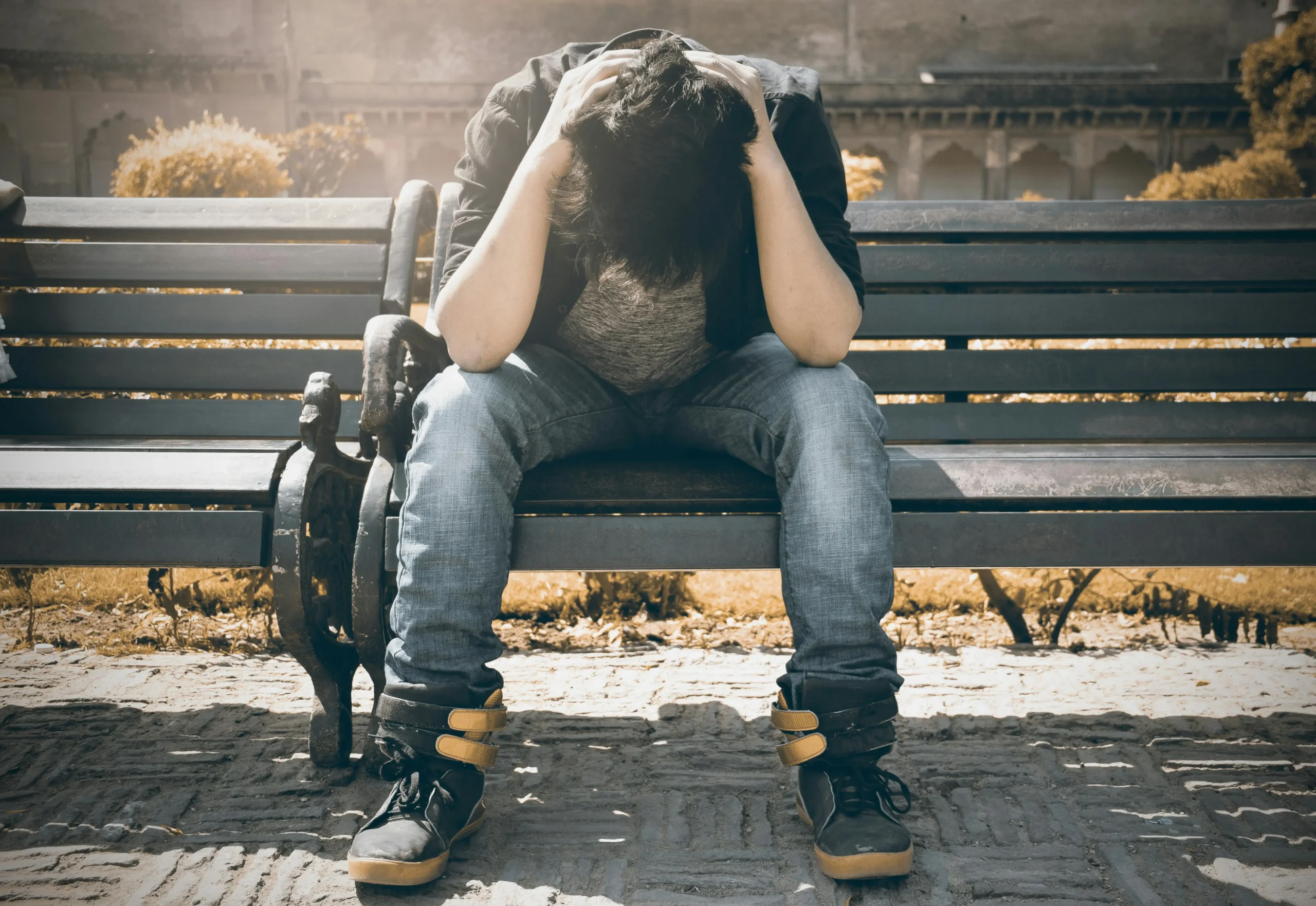Information on the Physical Symptoms Associated with Bipolar Disorder
Bipolar disorder is a complex mental health condition that can cause a wide range of physical symptoms. While the most well-known signs and symptoms of bipolar disorder are related to mood, such as mania and depression, there are many other physical effects that people with bipolar disorder may experience. Some of the most common physical symptoms associated with bipolar disorder include:
These physical symptoms can be just as debilitating as the emotional and mental symptoms of bipolar disorder, and they can significantly impact a person’s quality of life. It’s truly important to note that not everyone with bipolar disorder will experience all of these physical symptoms, and the severity of symptoms can vary from person to person. Additionally, some physical symptoms may be more prominent during certain phases of the disorder, such as mania or depression.
Physical Symptoms Associated with Bipolar Disorder
Mood Swings
- Manic Episodes: Characterized by feelings of euphoria, boundless energy, or extreme irritability.
- Depressive Episodes: Marked by sadness, hopelessness, or a lack of energy.
- Hypomanic Episodes: Similar to manic episodes but less severe, although they can still disrupt daily life.
- Sleep Disturbances: People may experience insomnia during manic phases and hypersomnia during depressive phases.
- Changes in Energy Levels: Manic episodes often involve a high state of energy and restlessness, while depressive episodes can cause extreme fatigue.
- Appetite Changes: Reduced appetite is common during manic states, while increased appetite and significant weight changes may occur during depressive states.
Mania
- Increased Energy and Overactivity: People with bipolar disorder experience a substantial boost in energy during manic episodes, often resulting in a frenetic pace of activities.
- Decreased Need for Sleep: Those experiencing mania may feel rested after only a few hours or be able to go days without sleep.
- Restlessness: Manic episodes can cause an incessant urge to move, making it difficult for individuals to stay still.
- Irritability: During mania, people with bipolar disorder may be quick to anger and often have a very short temper.
- Reckless Behaviors: Manic episodes can lead to participation in high-risk activities without regard for the consequences, such as impulsive financial decisions or dangerous physical feats.
Hypomania
Hypomania presents with symptoms similar to mania but in a milder form. During hypomanic episodes, individuals with bipolar disorder experience an elevated mood, increased productivity, and hyperactivity, though these symptoms do not reach the full extremes of mania.3 Physical symptoms of hypomanic episodes can include the following:
- Elevated Mood: People with bipolar disorder experience a noticeably uplifted mood during hypomanic episodes, which is less intense than in full mania.
- Increased Productivity: Hypomania can lead to a significant boost in productivity and efficiency for those with bipolar disorder, often accompanied by a surge in creative ideas.
- Hyperactivity: Individuals experiencing hypomania may have more energy than usual, leading to increased activity levels, but not as overwhelming as it would be during a manic episode.
Hypomanic episodes, while less severe than manic episodes, still significantly impact daily functioning and personal well-being for those living with bipolar disorder. Recognizing these signs and symptoms of bipolar disorder early can allow for prompt intervention, which can prevent the progression to more severe manic episodes. Effective management involves a combination of medication, therapy, and lifestyle adjustments to maintain stability and improve the quality of life for people with bipolar disorder.
How can bipolar disorder impact an individual's physical health?
Depression
- Changes in Sleep Patterns: People with bipolar disorder may experience a range of sleep disturbances during depressive episodes. This can include insomnia, difficulty falling asleep and staying asleep, or hypersomnia, where individuals sleep excessively.
- Appetite Fluctuations: Depressive episodes can cause increased or decreased appetite, leading to weight gain or loss.
- Reduced Energy Levels: Individuals experiencing depression as part of their bipolar disorder often face a profound loss of energy, making even small tasks feel overwhelming and exhausting.
What are the potential consequences of leaving bipolar disorder untreated?
How does bipolar disorder affect an individual's mood and behavior?
What if I am Bipolar?
Psychosis
- Hallucinations: People with bipolar disorder experiencing psychosis may sense things that are not present, such as hearing voices or seeing objects or people that aren’t there. These hallucinations can affect any of the senses (auditory, visual, tactile, olfactory, or gustatory).
- Delusions: Psychosis can cause strongly held false beliefs not influenced by logical reasoning or explained by a person’s usual cultural concepts. These can include paranoid delusions (believing others are monitoring or plotting against them) or grandiose delusions (irrational beliefs in one’s abilities or importance).
- Disorganized Thinking: Individuals with bipolar disorder experiencing psychosis may have difficulty organizing thoughts, leading to incoherent speech and making it hard to communicate effectively. Severe Anxiety: Psychosis can cause intense, overwhelming feelings of fear or dread that are not tied to any actual danger.
- Physical Agitation: People experiencing psychosis may be unable to stay still, which may include pacing, hand wringing, or other repetitive motions.
- Impaired Social Functioning: Psychotic symptoms can cause individuals with bipolar disorder to struggle with maintaining social relationships and performing at work or school.
Get Help for Bipolar Disorder at Cornerstone
Explore residential, outpatient, and virtual pathways to mental health recovery in Arizona.
Anxiety
Anxiety is a common symptom in both the manic and depressive phases of bipolar disorder, often exacerbating other symptoms. It manifests physically in several ways that can significantly affect daily functioning and overall quality of life for people with bipolar disorder 7. Physical symptoms of anxiety might appear as follows:
- Muscle Tension: Individuals with bipolar disorder may experience persistent tension in muscles, often leading to aches and pains that can be constant or intermittent.
- Restlessness: Anxiety can cause an inability to relax, resulting in constant movements such as fidgeting, pacing, or an overwhelming urge to move.
- Physical Discomfort: People with bipolar disorder may experience general unease or discomfort that does not have a clear physical cause, making it difficult to stay still or at ease.
- Tremors: Anxiety can lead to involuntary shaking or trembling, which can be subtle or quite pronounced.
- Sweating: Excessive sweating, often not related to physical exertion or temperature, is another physical symptom of anxiety in bipolar disorder.
- Rapid Heartbeat: An unusually fast heart rate that can occur even when at rest is a common sign of anxiety.
- Shortness of Breath: Individuals with bipolar disorder may feel breathless or as though they cannot get enough air, which may occur in the absence of physical exertion.
- Dizziness: Anxiety can cause a feeling of light-headedness or vertigo that can lead to balance issues.
- Gastrointestinal Issues: Problems such as nausea, diarrhea, or stomach cramps often accompany anxiety in those living with bipolar disorder.
The physical manifestations of anxiety in bipolar disorder can be debilitating, making it truly important to address them effectively. Treatment options include medication, cognitive-behavioral therapy, and lifestyle modifications such as stress management techniques and regular physical activity. These strategies help mitigate the physical symptoms of anxiety and improve the overall management of bipolar disorder for those affected by this mental health condition.
Irritability
- Physical Aggression: People with bipolar disorder may exhibit acts of aggression such as hitting, throwing items, or other violent behaviors that arise with little provocation.
- Restlessness: Irritability can cause an ongoing inability to stay still, often resulting in pacing, shifting positions frequently, or an inability to settle into any activity for long.
- Impulsive Behaviors: Individuals with bipolar disorder may engage in sudden and unpredictable actions that can include rash decision-making or impulsive spending.
- Facial Grimacing: Irritability can lead to involuntary facial expressions that reflect inner tension and discomfort.
- Tense Muscles: People with bipolar disorder may experience continuous muscle tension leading to discomfort and pain, often manifesting in the back, neck, or shoulders.
- Increased Volume or Speed of Speech: Irritability can cause individuals to speak louder or faster than normal, which can be jarring or disruptive to conversations.
Key Takeaways
- Key Takeaways
- Diverse Physical Symptoms Across Bipolar Phases: Bipolar disorder is characterized by distinct phases, including mania, hypomania, depression, and potentially psychosis, each with its own set of physical symptoms.
- Manic and Hypomanic Episodes: These phases involve increased energy, reduced need for sleep, and heightened activity levels. Mania is more severe, potentially including reckless behaviors and psychosis, while hypomania presents milder symptoms.
- Depressive Episodes: Depression in bipolar disorder is marked by significantly low energy levels, altered sleep patterns (insomnia or hypersomnia), and changes in appetite, which can result in weight fluctuations.
- Psychotic Symptoms: Severe bipolar episodes may lead to psychosis, characterized by hallucinations, delusions, disorganized thinking, and other symptoms that impair perception and behavior.
- Anxious and Irritable Presentation: Anxiety and irritability are common across bipolar phases, manifesting physically as muscle tension, restlessness, and in the case of irritability, physical aggression and impulsive actions.
- Significant Impact on Daily Functioning: The physical symptoms of bipolar disorder can severely impair an individual's social, occupational, and personal functioning, necessitating comprehensive management strategies.
- Comprehensive Treatment Approach: Effective treatment typically involves a combination of medication (mood stabilizers, antipsychotics), psychotherapy (cognitive behavioral therapy), and lifestyle adjustments (regular exercise, structured routines).
Racing thoughts
- Rapid Speech: People with bipolar disorder may speak at an unusually fast pace during manic episodes, making it difficult for others to follow the conversation.
- Inability to Focus: Racing thoughts can cause a lack of concentration, disrupting work and personal tasks, making it hard for individuals to complete even simple activities.
- Physical Exhaustion: The mental strain of constant, rapid thoughts can lead to overall fatigue and a lack of physical energy in those with bipolar disorder.
- Restlessness: Racing thoughts can result in an inability to remain physically still, often accompanied by tapping feet, fidgeting, or pacing.
- Interrupted Sleep Patterns: An overactive mind can make it difficult for people with bipolar disorder to fall or stay asleep, leading to sleep deprivation.
- Heightened Sensitivity: Manic episodes can cause increased sensitivity to sensory input like sounds or lights, which can be overwhelming and distracting for those experiencing racing thoughts.
Impulsivity
Sudden and risky actions without foresight or consideration of the consequences characterize impulsivity in bipolar disorder. These behaviors are not only hazardous but can also have severe physical and personal repercussions for individuals living with this mental health condition 10. These physical symptoms can be characterized by:
- Excessive Spending: People with bipolar disorder may engage in rapid financial decisions that can lead to economic hardship or debt accumulation.
- Reckless Driving: Impulsivity can cause individuals to operate vehicles in a dangerous manner that increases the risk of accidents and injury.
- Engagement in Dangerous Activities: Impulsive people may engage in extreme sports or other risky behaviors without proper preparation or safety measures.
- Substance Abuse: Bipolar disorder can lead to an increased likelihood of using drugs or alcohol impulsively, which can have immediate and long-term health effects.
- Physical Injuries: Accidental injuries may occur due to impulsive decisions in physical activities or conflicts.
- Neglect of Personal Health: Individuals with bipolar disorder may skip necessary health appointments or neglect personal care routines, which can worsen their physical health.
Managing impulsivity in bipolar disorder is truly important for preventing these potentially damaging outcomes. Treatment often involves a combination of pharmacological solutions, such as mood stabilizers or antipsychotic medications, and psychological interventions, including cognitive behavioral therapy and skills training. Implementing structured routines and engaging in mindfulness practices can also help individuals gain better control over their impulses, leading to improved safety and well-being for those affected by this mental health condition.
Psychomotor Agitation
Psychomotor agitation is a prevalent symptom of bipolar disorder, especially notable during manic episodes. It reflects the internal emotional turmoil and increased energy levels that are characteristic of these phases. This symptom not only manifests physically but also significantly disrupts daily life due to its intensity and persistence for individuals living with bipolar disorder 11. Physical symptoms of psychomotor agitation can look like this:
- Pacing: People with bipolar disorder may engage in constant walking back and forth without a clear purpose or destination.
- Restlessness: Psychomotor agitation can cause an overwhelming inability to stay still, manifesting in frequent position changes or fidgeting.
- Inability to Sit Still: Individuals may experience difficulty remaining seated, often resulting in repeatedly standing up or shifting positions.
- Rapid Talking: Speaking faster than usual can be a sign of psychomotor agitation, making communication difficult and exhausting for both the speaker and the listener.
- Hand-Wringing: Repeated motions such as wringing hands or rubbing objects are indicative of nervous energy in those with bipolar disorder.
- Tapping or Shaking Legs: Involuntary leg movements are symptomatic of internal agitation in individuals experiencing psychomotor agitation.
The presence of psychomotor agitation can be extremely distressing and hinder effective communication, personal relationships, and professional responsibilities for those affected by bipolar disorder. Management of this symptom is truly important and typically involves a combination of medication, such as antipsychotics or beta-blockers, and psychotherapy. Techniques such as relaxation exercises, mindfulness meditation, and structured physical activities can also help alleviate the severity of these symptoms, promoting a calmer and more controlled demeanor for individuals living with this mental health condition.
How We Can Help
Bipolar disorder is a complex mental health condition that affects individuals in numerous ways, including through a wide range of physical symptoms. At Cornerstone Healing Center, our mental health services, we understand the challenges faced by individuals and families affected by bipolar disorder. Our experienced team of professionals is dedicated to providing comprehensive, compassionate care tailored to each person’s unique needs. Whether you or a loved one seek an accurate diagnosis, effective treatment options, or ongoing support, we are here to help.
Our services include a range of evidence-based therapies, such as cognitive-behavioral therapy, family-focused therapy, medication management, and lifestyle support. We work closely with our clients to develop personalized treatment plans that address both the mental and physical aspects of bipolar disorder, promoting recovery and improving quality of life. If you or someone you care about is experiencing the physical symptoms of bipolar disorder, know that you are not alone. Reaching out for help is a sign of strength and the first step towards a brighter future. Contact our mental health services today to learn more about how we can support you on your journey to wellness!









